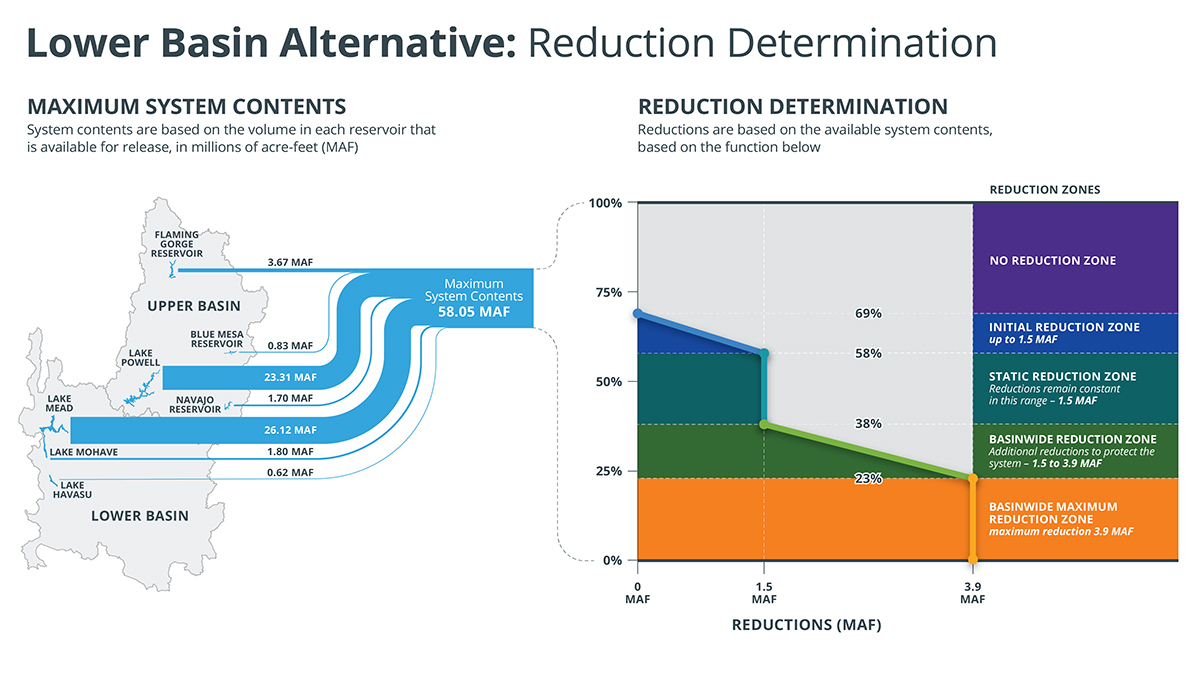This has been an incredibly busy time for Colorado River news. Here are a few highlights to update you on recent important announcements.
First, on Tuesday, March 5, Reclamation released its Final Supplemental Environmental Impact Statement for Near-Term Colorado River Operations. This features as the preferred alternative, the Lower Basin states’ May 2023 proposal to conserve three million acre-feet of Colorado River by 2026, beyond reductions previously agreed to under the 2007 Interim Shortage Guidelines and the Drought Contingency Plan. The goal here is to stabilize the Colorado River system in the near-term through 2026 when these guidelines expire. You can read the three-state press statement here.

Next, on Wednesday, March 6, CAP hosted a national press conference regarding the Lower Basin States’ Alternative for Post-2026 Colorado River Operations to help ensure the rivers system’s health and sustainability for decades to come. This alternative was drafted collaboratively by Arizona, California and Nevada. Alternatives will be reviewed as part of the multi-year environmental review process led by Reclamation.
The goal is to address the impacts of drought and climate change through a holistic and sustainable approach to the coordinated operations of Lake Powell and Lake Mead that improves predictability for water users. The alternative includes two major concepts:
Maximum system contents – System contents are based on the volume in seven major reservoirs that is available for release, in millions of acre-feet (MAF).
- Reduction determination – Reductions are based on the available system contents, as follows:
- Initial Reduction Zone (69% – 58%): Reduction to Lower Basin water uses increasing from 0 to 1.5 MAF
- Static Reduction Zone (58% – 38%): Consistent 1.5 MAF reduction to Lower Basin water uses
- Basinwide Reduction Zone (38% – 23%): Additional reductions to protect the system, increasing from 1.5 MAF to 3.9 MAF
- Maximum Reduction Zone (23% and below): Consistent 3.9 MAF reduction
This alternative concept is demonstrated in this infographic:

This alternative was submitted by the Lower Basin states, which remain committed to working with the Upper Basin states, Mexico, water users, Tribes, stakeholders and NGOs to develop a Basin-wide consensus-based alternative for further evaluation.



